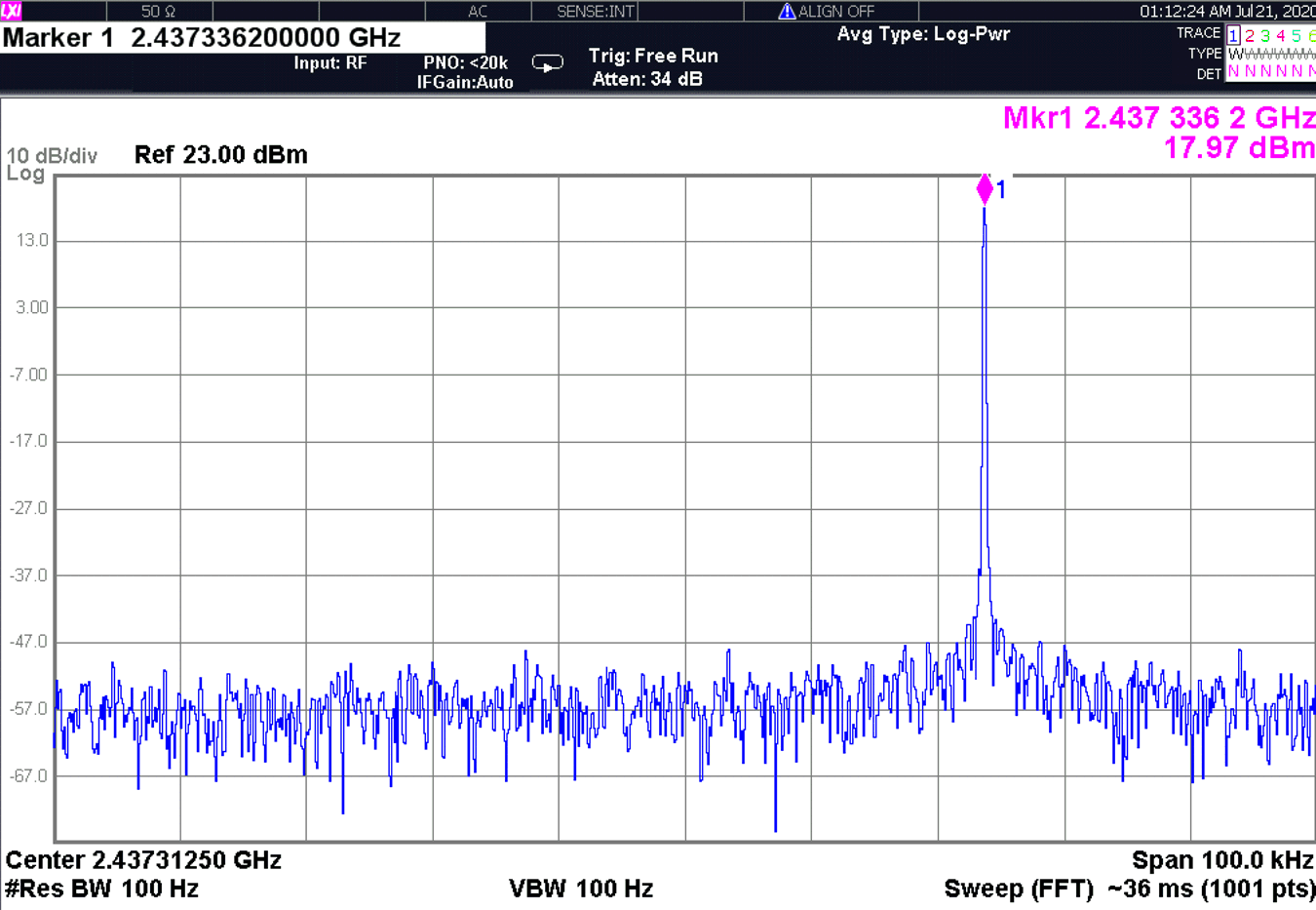SWRA680 November 2020 CC3100 , CC3120 , CC3135 , CC3200 , CC3220R , CC3220S , CC3220SF , CC3235S , CC3235SF
4.3 Measuring ppm Frequency Error
After flashing the device and running “RadioToolGUI.exe”, connect the device using Radio Tool. In the “TX” tab choose “CW” mode and select the “Tone” as 1, once you click “Start TX testing” the device will transmit a RF unmodulated sin wave. This RF signal will transmit at a Channel frequency + 312.5 KHz. For example, when on CH6, the sine wave would be at 2437.3125 Mhz.
Measure the actual frequency with the spectrum analyzer and the delta from the expected frequency gives the frequency error. For accurate measurement, set a low span in the spectrum analyzer, like 100 KHz and RBW of 100Hz. Ensure that there is minimum drift over a period of time.
 Figure 4-3 Usign the Spectrum Analyzer to
Measure the Frequency Error
Figure 4-3 Usign the Spectrum Analyzer to
Measure the Frequency ErrorFigure 4-3 shows using the spectrum analyzer to measure the frequency, 2437.3362 MHz at marker 1 when the expected frequency was 2437.3125MHz.
Thus the frequency error is 2437.3125 Mhz - 2437.3362 Mhz = -.0237 Mhz = -23.7 Khz
To convert this frequency error to ppm unit, the following equation is used:

The example ppm would be: [0.0237 Mhz/ 2437.3125 Mhz]*10^6 = -9.724 ppm.
With that knowledge adjust the onboard shunt capacitance to bring the frequency error to as low value as possible (at 25°C). A positive ppm error (larger frequency) indicates you need to increase the capacitance and negative ppm error indicates you need to decrease the cap. Note that the two shunt caps effectively come is series. For fine adjustments, the two capacitors can have different values.